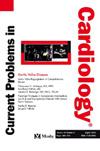环状rna作为阿霉素诱导心脏毒性的调节介质和治疗靶点。
IF 3.3
3区 医学
Q2 CARDIAC & CARDIOVASCULAR SYSTEMS
引用次数: 0
摘要
阿霉素(DOX)仍然是一种基础化疗药物,尽管其剂量依赖性心脏毒性可发展为不可逆扩张型心肌病。与此同时,DOX诱导心脏损伤的机制是多因素的,新出现的证据强调环状RNA (circRNAs)是一类独特的共价封闭非编码RNA分子,是DOX心脏毒性的关键调节因子。这篇综述全面研究了环状rna的生物发生和功能,以及它们在调节dox诱导的心脏损伤中的关键作用。CircRNAs主要通过竞争性内源性RNA活性、RNA结合蛋白相互作用、翻译产物和RNA n6 -腺苷甲基化相关机制发挥心脏保护或心脏毒性作用。值得注意的是,研究空白在于了解环状rna如何协调由DOX触发的五种主要受调节的细胞死亡途径之间的复杂相互作用:凋亡、自噬、坏死坏死、铁坏死和焦亡。此外,环状rna影响dox诱导的心肌细胞功能障碍的细胞过程,包括氧化应激、钙处理缺陷、心肌萎缩、血栓形成和过早衰老。本综述的新颖之处在于综合了这些不同病理生理机制中circrna介导的调控网络的证据,为开发基于circrna的诊断生物标志物和治疗干预提供了理论基础。未来的研究方向应该集中在阐明其他分子机制,验证基于circrna的生物标志物,并建立临床应用的翻译框架,以减轻DOX心脏毒性,同时保持其抗肿瘤功效。本文章由计算机程序翻译,如有差异,请以英文原文为准。
Circular RNAs as regulatory mediators and therapeutic targets in doxorubicin-induced cardiotoxicity
Doxorubicin (DOX) remains a cornerstone chemotherapeutic agent despite its dose-dependent cardiotoxicity that can progress to irreversible dilated cardiomyopathy. At the same time, the mechanisms of DOX-induced cardiac injury are multifactorial, emerging evidence highlights circular RNAs (circRNAs) a unique class of covalently closed non-coding RNA molecules, as critical regulators of DOX cardiotoxicity. This review comprehensively examines the biogenesis and functional repertoire of circRNAs and their pivotal role in modulating DOX-induced cardiac damage. CircRNAs exert cardioprotective or cardiotoxic effects primarily through competitive endogenous RNA activity, RNA-binding protein interactions, translational products, and RNA N6-adenosine methylation-related mechanisms. Notably, the research gap lies in understanding how circRNAs orchestrate the complex interplay between five major regulated cell death pathways triggered by DOX: apoptosis, autophagy, necroptosis, ferroptosis, and pyroptosis. Additionally, circRNAs influence cellular processes underlying DOX-induced cardiomyocyte dysfunction, including oxidative stress, calcium handling defects, myocardial atrophy, thrombosis, and premature senescence. The novelty of this review lies in synthesizing evidence on circRNA-mediated regulatory networks across these diverse pathophysiological mechanisms, providing a theoretical foundation for developing circRNA-based diagnostic biomarkers and therapeutic interventions. Future research directions should focus on elucidating additional molecular mechanisms, validating circRNA-based biomarkers, and establishing translational frameworks for clinical applications to mitigate DOX cardiotoxicity while preserving its antitumor efficacy.
求助全文
通过发布文献求助,成功后即可免费获取论文全文。
去求助
来源期刊

Current Problems in Cardiology
医学-心血管系统
CiteScore
4.80
自引率
2.40%
发文量
392
审稿时长
6 days
期刊介绍:
Under the editorial leadership of noted cardiologist Dr. Hector O. Ventura, Current Problems in Cardiology provides focused, comprehensive coverage of important clinical topics in cardiology. Each monthly issues, addresses a selected clinical problem or condition, including pathophysiology, invasive and noninvasive diagnosis, drug therapy, surgical management, and rehabilitation; or explores the clinical applications of a diagnostic modality or a particular category of drugs. Critical commentary from the distinguished editorial board accompanies each monograph, providing readers with additional insights. An extensive bibliography in each issue saves hours of library research.
 求助内容:
求助内容: 应助结果提醒方式:
应助结果提醒方式:


